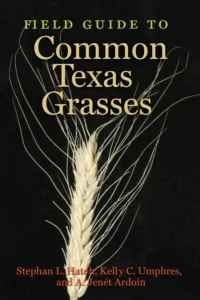The book covers 172 species of grasses and contains range maps and color images of the inflorescences and spikelets of each species along with detailed, black-and-white illustrations found in the original volume. The plants are arranged by growth characteristics, ranging from free-floating aquatics to shrubs, and each plant occupies a handy, two-page spread. The book is a standard field reference for botanists, students, and naturalists and is available in flexbound format with 448 pages, 348 color photos, and 174 maps.



